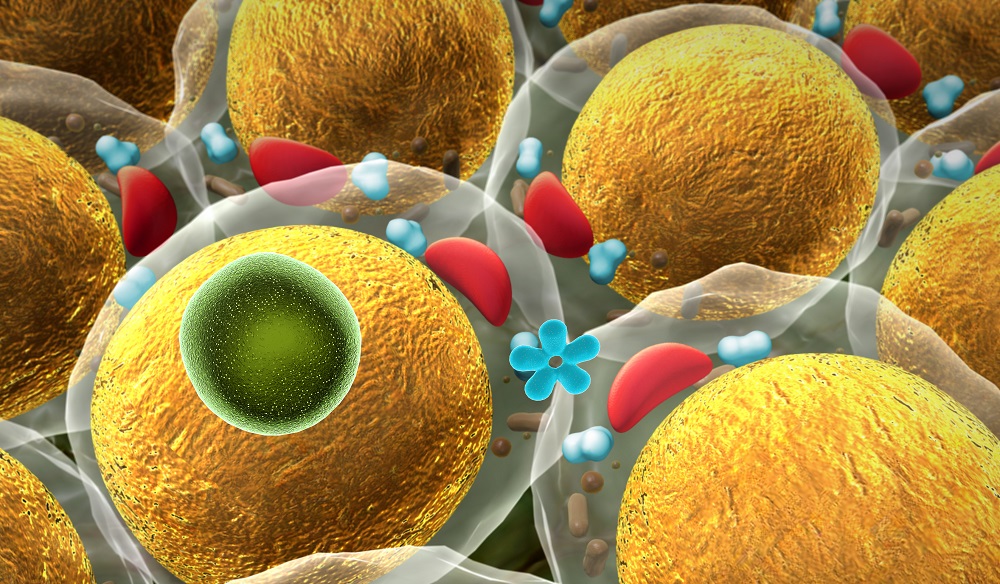(video) Fat Cells Move to Heal Wounds
Summary: For the first time in history, researchers in Scotland observe and film fat cells – formerly thought to be immobile – rushing in to heal wounds. [This article first appeared on LongevityFacts. Author: Brady Hartman. ]
While fat usually gets a bad rap, a new study suggests that fat may be critical to wound healing.
The team announcing the discovery included Anna Franz, Will Wood, Paul Martin with the Queen’s Medical Research Institute at the University of Edinburgh in Scotland.
The three scientists watched fat cells, which were previously thought to be immobile, propel themselves toward wounds with a wormlike motion.
After arriving at the site of a wound, fat cells play an essential role in the wound healing process,
“They work a lot harder and are more of a team player than was previously thought,” says Paul Martin
The University of Edinburgh team labeled the fat cells of fruit fly pupae with a fluorescent dye and then used a laser to make a small wound in the developing fly larva. Within an hour, the fat cells had swum toward the injury. The three researchers published their results on Feb 26, 2018, in the journal Developmental Cell.
Video of fat cells migrating to a wound courtesy of Science. Youtube link to the video.
The researchers say that that cells likely play a similar role in healing the wounds of humans too. The fat cells of the fruit fly are equivalent to those of humans and other vertebrates, though it remains to be seen if we follow the exact same process.
Fat Cells Aid in Wound Healing
The scientists discovered that immune cells called macrophages showed up at the wound first. The fat cells arrived shortly after that and brushed the immune cells aside. The researchers found a protein called actomyosin is responsible for the fat cells’ wormlike propulsion. The fat cells continued to show up at the injury even when the scientists deactivated the immune cells, indicating that macrophages aren’t signaling the location of the wound.
Both types of cells worked together to heal the wound. The fat cells crowded into the wound and pushed the cellular debris to edges where the immune cells could consume the waste. The fat cells tightly plugged the injury until new tissue could grow and released antimicrobial compounds at the infected wounds. The fat cells stayed at the wound site until it was healed.
“Then they detach and just swim off, as though their job is done,” says Martin.
Advancements in microscopy techniques are enabling researchers to uncover more of the cell’s hidden secrets. Recently, another group of scientists used a new type of microscope to catch the molecule triggers inflammation in autoimmune diseases. The researchers filmed mitochondrial DNA escaping during cell death, for the first time. This discovery is not just a scientific curiosity because rogue mitochondrial DNA contributes to the chronic inflammation that plays a role in autoimmune diseases.
Like this Article?
- Help us spread the word – Click on any of the social media links to share this article.
- Follow us on social media – Google+ or Reddit
References
Cover Photo: Ugreen / Getty Images.
“Watch fat cells help heal a wound in a fly.” Cell Press via ScienceDaily. February 26, 2018
Franz, Anna et al. “Fat Body Cells Are Motile and Actively Migrate to Wounds to Drive Repair and Prevent Infection.” Developmental Cell, Volume 44, Issue 4, 460 – 470.e3
Kimberly Hickok. “Watch a wound close with the help of fat cells.” Science. ScienceShots. Feb. 26, 2018.
Disclaimer
Diagnosis, Treatment, and Advice: This article is intended for informational and educational purposes only and is not a substitute for qualified, professional medical advice. The opinions and information stated in this article should not be used during any medical emergency or for the diagnosis or treatment of any medical condition. Consult a qualified and licensed physician for the diagnosis and treatment of any and all medical conditions. Experimental treatments carry a much higher risk than FDA-approved ones. Dial 9-1-1, or an equivalent emergency hotline number, for all medical emergencies. As well, consult a licensed, qualified physician before changing your diet, supplement or exercise programs.
Photos, Endorsements, & External Links: This article is not intended to endorse organizations, companies, or their products. Links to external websites, mention or depiction of company names or brands, are intended for illustration only and do not constitute endorsements.
